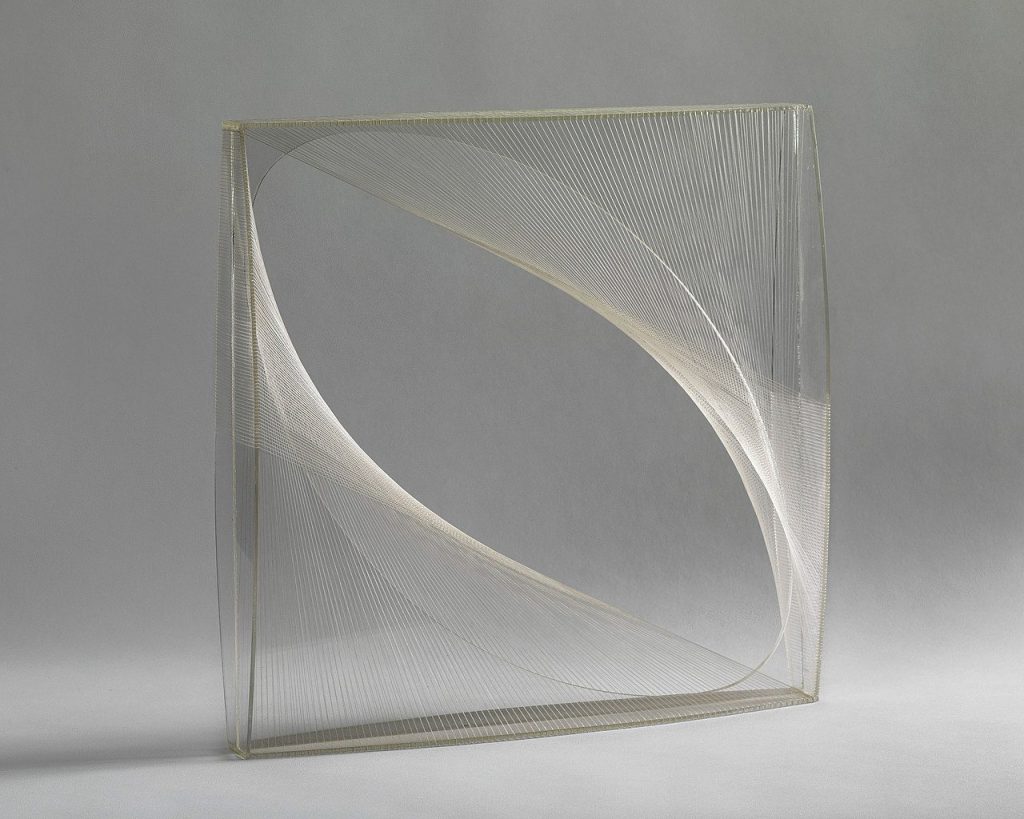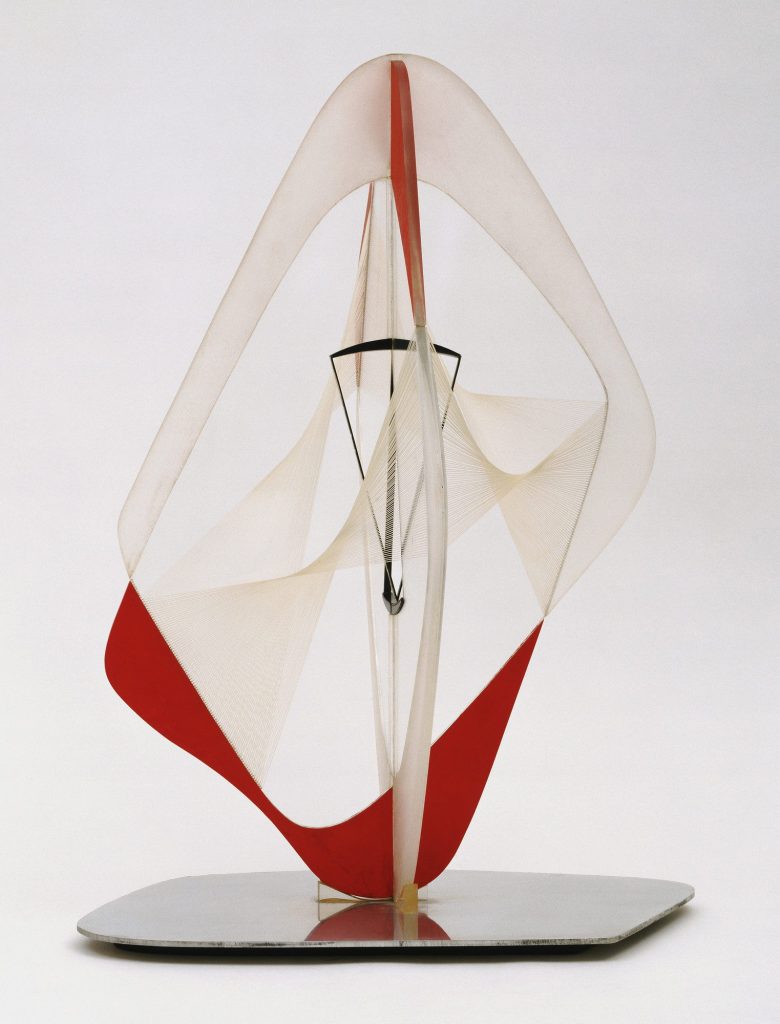Naum Gabo
“The realization of our perceptions of the world in the forms of space and time is the only aim of our pictorial and plastic art.”
Naum Gabo, Realistic Manifesto, 1920
Naum Gabo is a Russian artist who became a leading pioneer in Constructivism sculpture. He was originally trained as an engineer, but was later deeply inspired by building techniques and emerging modernist currents like Picasso’s collage art and decided to become a sculptor. In 1920, he and his brother published one of the most important texts of Constructivism: the Realistic Manifesto, in which they rejected the successive stylistic innovation in modern art as mere “illusionism”, and instead call for a form of art that focus on the material reality of space and time.
Linear Construction in Space
Space is an element of the sculpture, a component of its rhythm, it pervade the while obeject
Naum gabo




Linear Construction in Space is Gabo’s sculpture series in which he imagined an art of construction and measure. According to him, the role of the lines in his sculpture is not to limit the volume, but instead to reveal the hidden structure and rhythm. The result is a work that combines light, emptiness, and transparency.
Illution: curve & depth & wholeness.

Prompt Questions
What feature of the work could we specifically evolve into a technique for kinetic sculpture or installation?
The use of lines to reveal the hidden. The transformation of engineering measurement, planning, and construction techniques into an emotion-inducing artwork.
What details of the artwork or concept are not immediately apparent and how do they inform the work?
The whole sculpture is made out of plastic boards and nylon filaments, with the latter being invented for no more than ten years by the time of the series’ construction. This reveals the constructivist artist’s belief that art should reflect the industrial world.
Leave a Reply
You must be logged in to post a comment.